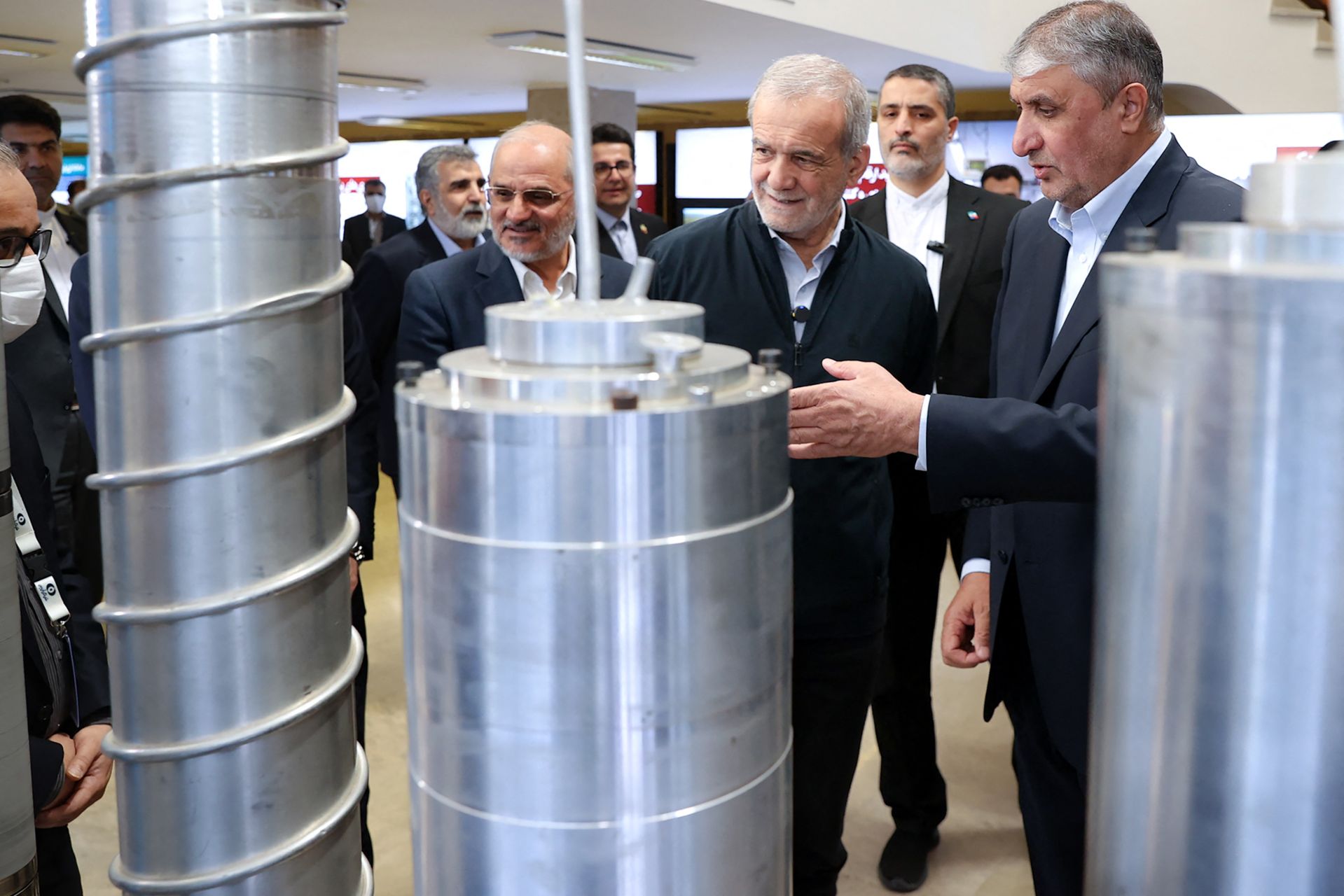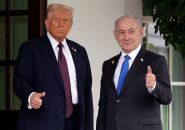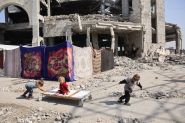- Home
- Middle East
- Iran's Expanding Nuclear Programme: From 2015 Deal to Today

A handout picture provided by the Iranian presidency shows President Masoud Pezeshkian and the Atomic Energy Organisation of Iran (AEOI) chief Mohammad Eslami (R) during the "National Day of Nuclear Technology", in Tehran ©Iranian Presidency / AFP
The United States and Iran are to hold talks in Oman on Saturday on Tehran's nuclear programme, with concerns mounting about its rapid expansion and both Washington and Israel warning of military action if discussions drag on.
Tensions between Iran and the West have repeatedly flared up since Donald Trump, during his first term as US president, withdrew from a landmark 2015 deal that had exchanged sanctions relief for limits on the nuclear programme.
As Iran began significantly ramping up its nuclear activities in recent years, Western powers have voiced fears that it seeks nuclear bombs, an ambition Tehran has always denied.
AFP takes a look at the main developments in talks on Iran's nuclear programme since 2015.
Historic accord
On July 14, 2015, Iran and the five permanent members of the UN Security Council -- Britain, China, France, Russia and the United States -- plus Germany reached a historic accord in Vienna.
The deal, called the Joint Comprehensive Plan of Action (JCPOA), placed significant restrictions on Iran's nuclear programme in exchange for sanctions relief after 12 years of crisis and 21 months of protracted negotiations.
Under the accord, which came into force in January 2016, Tehran's nuclear programme was subject to strict control by the International Atomic Energy Agency (IAEA) to guarantee Iran is not trying to make a nuclear bomb.
But the hard-won deal began to unravel when Trump walked away from it on May 8, 2018.
Washington reimposed sanctions on Iran and companies with ties to it, hitting the central bank and the country's vital oil sector.
Major international firms then halted activities in the country.
Iran breaches nuclear commitments
Following the US withdrawal, Iran retaliated by stepping up its nuclear activities.
It first began enriching uranium to five percent -- breaching the limit of 3.67 percent imposed by the deal -- before it raised the enrichment levels to 20 and then to 60 percent in 2021, which is a short step from the 90 percent required for use in a weapon.
Uranium enriched up to 20 percent can be used to produce isotopes for medical uses, for example in diagnosing certain cancers.
Iran has also increased its stockpiles of enriched uranium, which was set at 202.8 kilogrammes under the deal.
And Tehran has since exceeded the number of centrifuges -- the machines used to enrich uranium -- it is allowed to have while beginning to produce more material faster by using advanced models at its Natanz and Fordo plants.
At the same time, the country has reduced its cooperation with the UN nuclear watchdog by limiting inspections, disconnecting surveillance cameras and withdrawing accreditations from several inspectors.
Efforts to revive the deal have been fruitless so far, with European-led talks on hold since summer 2022.
Status quo
According to the latest IAEA report, Iran's stockpile of enriched uranium was estimated at 8,294 kilogrammes as of February, an increase of 1,690 kilogrammes since the previous quarterly report.
The amount is about 41 times the limit set in the 2015 accord.
The report also noted "serious concern" that Iran had an estimated 274.8 kilogrammes of uranium enriched to 60 percent, marking a clear acceleration in the rate of production.
According to experts, the country now produces 35 to 40 kilogrammes of uranium enriched to 60 percent per month -- close to the 42 kilogrammes needed for one nuclear weapon, if enriched further.
Iran is the only non-nuclear weapon state to enrich uranium to up to 60 percent, the IAEA says, even if the production of a nuclear bomb requires many other steps.
In the coming talks, Tehran could "save face" by agreeing not to enrich uranium beyond 20 percent and by exporting most of its production up to that level, Robert Kelley, a former director of IAEA inspections, wrote in a recent column.
Such a proposal would remove the "imminent weapons threat" and pave the way for a new agreement that "differs substantively" from that of 2015, according to Kelley, now an associate fellow of the Stockholm International Peace Research Institute.
By Kiyoko METZLER- AFP
Read more




Comments